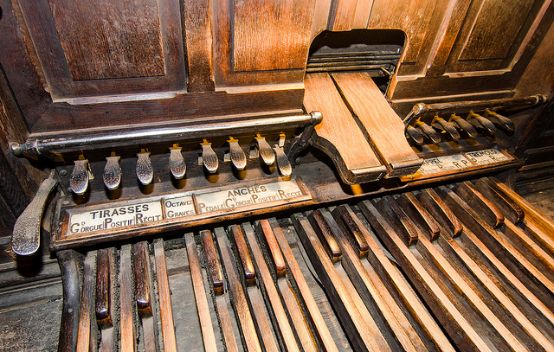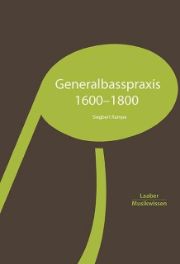The basso continuo from 1600 to 1800
Siegbert Rampe divides the period in question into three sections and uses examples to answer many practical questions in his textbook.

Musicians, theorists and students, especially ensemble leaders, have had to wait a long time for a comprehensive, historically sound presentation of their tricky practical questions. Siegbert Rampe has undertaken this task with detailed knowledge of the sources and secondary literature, not without referring to the best for keyboard players. Textbook based on contemporary sources for the 18th century by Jesper Bøje Christensen (Kassel etc. 1992, 62012). Rampe divides his book into three periods, 1600-1650, 1650-1750 and 1750-1800, which differ fundamentally from one another, although the boundaries are of course fluid. Three points are typical of the early period: 1) figured basses without or with rudimentary figuring predominated. 2) The number of voices could vary greatly within the same movement without the later norm of four voices, whereby these voices were distributed evenly between both hands and full-fingered playing on the harpsichord was popular. 3) The instrumentation was still very colorful, including plucked instruments as well as low string instruments (in 8- and 16-foot positions) of all types, trombone, organi di legno and regal. Rampe has repeatedly given the distribution to both hands the misleading designation "wide movement". Rich musical examples of early model settings in modernized notation help the user to draw the correct conclusions. In the case of Italian organs, it should be pointed out that most of them had no pedal or only a few fixed pedals and that the lower limit of the manuals between small and large instruments was not standardized and could be f, c, F, C, F1, C1 or (rarely) even lower.
In the second part, Rampe does away with entrenched casting opinions: The usual term Sonata a violino e violone o cimbalo (Corelli op. 5), basso continuo for string instrument (viola da gamba/violoncello) or keyboard instrument (p. 79) is to be understood literally (which includes and does not exclude), also applies outside Italy and in the 18th century, whereby chordal playing of the string bass is possible, e.g. in recitatives (music example p. 167). Richer bass scoring depending on the size of the ensemble remains a possibility. It was customary for church music to be accompanied by the great organ, but not by a positive as is the case today. The proportion of organ pedal playing is disputed among experts, with Rampe advocating a lot of pedal and not mentioning the "Musiziergedackt" stop in the concert pitch (2 or 3 semitones below the chorus pitch) on many large organs. - In secco recitatives, the shortening of long bass notes to short chords (including bass) was the dominant practice, even in Johann Sebastian Bach. This controversial issue in the secondary literature is described and resolved in detail by Rampe, although he only discusses the accompagnato recitative on page 193, probably because it is not controversial. - Many music examples for "mannerly continuo" give practitioners plenty of suggestions.
In the third part, the growing number of textbooks is explained by the growing number of well-heeled music lovers. Their significance for the Baroque era is not addressed. For example, Carl Philipp Emanuel Bach's Generalbassschule from 1762 is also illuminating for the period before 1750, as his father's cantatas not only became the exploited guideline for his own cantata and passion works, he also made them the standard repertoire when he became music director of the five main churches in Hamburg in 1768. - Rampe criticized the poor quality of Kirnberger's setting of the trio sonata in the Musical sacrifice not recognized or not named (p. 188). He also sticks (p. 197) to his probably incorrect dating of Bach's Triple Concerto in A minor. I have explained this in detail and for good reason in my Bach book. On the whole, however, his work on the many individual questions of a subject of great practical importance remains positive and worth reading.
Siegbert Rampe: Generalbasspraxis 1600-1800, (= Grundlagen der Musik 5), 262 p., € 29.80, Laaber-Verlag, Laaber 2015, ISBN 978-3-89007-829-8








